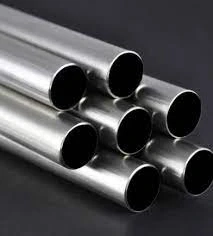Although stainless steel contains a significant amount of chromium the alloy that gives stainless steel its renowned corrosion resistance all steels share the same core iron and carbon composition.
Stainless steel comes in many grades, each with a slightly different alloy composition and thus somewhat varied physical properties.
Chromium must make up at least 10.5% of stainless steel. It may have substantially higher chromium concentrations, as well as additional alloying elements including molybdenum, nickel, titanium, aluminium, copper, nitrogen, phosphorus, or selenium, depending on the grade.
Stainless Steel 304
Due to its superior corrosion resistance and affordability, 304 Stainless Steel is the most popular variety used globally. It has a chromium content of 16 to 24 percent, a nickel content of up to 35 percent, and trace levels of carbon and manganese.
The most popular variety of type 304 stainless steel is 18-8 (18/8) stainless steel, which has a chromium and nickel content of 18% and 8%, respectively.
Most oxidizing acids won\'t cause 304 to corrode. As a result, 304 is simple to sterilize and is perfect for applications involving food and in the kitchen. Additionally, it is typical of site furniture, décor, and buildings.
One drawback of 304 stainless steel is that it is prone to corrosion in salty conditions, such as the coast, or from chloride solutions. Pitting, a type of corrosion caused by chloride ions, can develop beneath defenses made of chromium and endanger internal structures. Solutions as low as 25 ppm of sodium chloride might start to corrode materials.
Typical applications for stainless steel 304
- Storage troughs
- Hardware for finishing and fastening (screws, nuts, bolts, plates, handles)
- Cooking utensils
- Domestic sinks and sink accessories
- Architectural and decorative hardware for indoors (panels, sculptures, sconces)
- Instrument tubes
- Household appliances
Natural resistance against corrosion
Corrosion happens in nature. Few elements are normally found in their pure form since they always interact with their surroundings. The same is true of iron.
Rust is created when iron and the oxygen in water react in damp or humid conditions (iron oxide). More material is exposed to corrosion as a result of the red flaky oxide\'s quick degeneration. This type of corrosion is extremely prone to affecting iron and typical carbon steels.
The passive coating that stainless steel naturally forms to stave off corrosion. The trick?
Chromium.
All stainless steels contain chromium, which reacts quickly in oxygen conditions in a manner similar to how iron does.
However, there is a distinction since only a very thin layer of chromium will oxidize (often only a few molecules in thickness). Chromium oxide, in contrast to flaky and unstable iron oxide, is extremely robust and non-reactive. It won\'t transfer to or further react with other materials, making stainless steel surfaces its ideal application. Additionally, the barrier is self-renewing; if it is broken or removed, additional chromium will react with oxygen to replace the barrier. The speed at which the barrier heals itself increases with chromium content.



